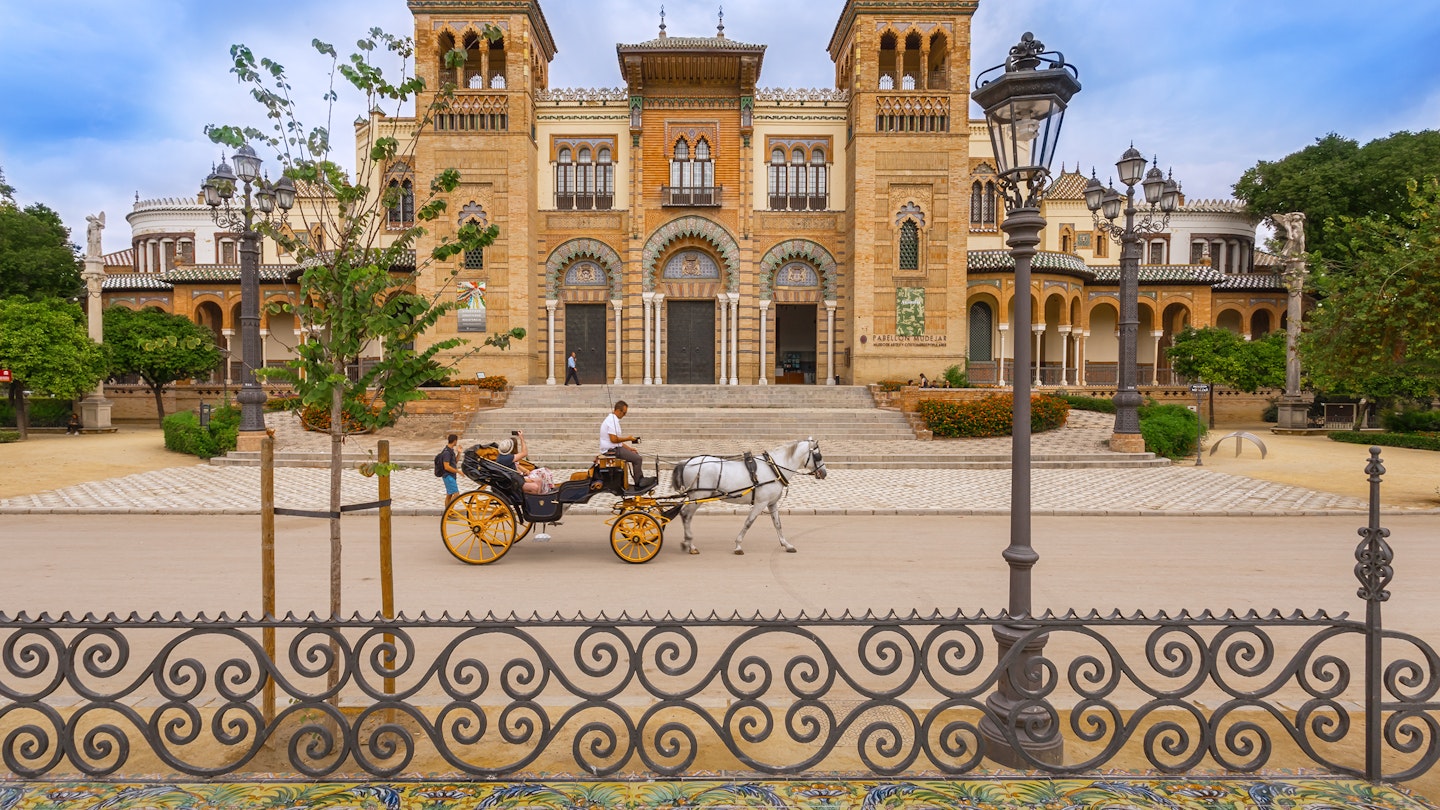Discover the Best Museums in Seville
Seville’s major attractions mainly consist of stunning palaces, impressive monuments, and notable architecture; however, it also boasts a captivating array of museums. You can find everything from classic art and intriguing science exhibitions to unique museums celebrating Andalusian culture, including flamenco and traditional ceramics. While it’s typically easy to purchase tickets upon arrival at most museums, some may limit visitor numbers, so checking in advance is advisable. Here’s a curated list of the best museums in Seville.
Learn about Andalusian culture at Museo de Artes y Costumbres Populares
Located within the Parque de María Luisa, the Museo de Artes y Costumbres Populares is dedicated to the ethnological heritage of Andalusia. Situated in a beautifully designed Mudéjar Pavilion built for the 1929 Ibero-American Exhibition, the museum showcases an extensive collection of clothing, ceramics, craftworks, and utensils. Notably, its collection of lace and embroidery is among the most significant in Europe, featuring over 6,000 pieces. Visitors can also explore antique glass items, traditional toys, and historical postcards from Andalusia.
Museo de Bellas Artes: Seville’s Classical Art Gallery
Seville’s Museo de Bellas Artes is housed in an old convent with elegant courtyards and stylish rooms. Since the 19th century, this museum has showcased a diverse collection that includes paintings, ceramics, sculptures, furniture, and precious metal works. Most notable are the paintings from the Baroque era, portraying vivid depictions of Andalusian life. Some of Spain’s renowned artists, including Bartolomé Esteban Murillo and Francisco de Zurbarán, are represented here. Admission is free, contributing to an enriching cultural experience.

Centro Andaluz de Arte Contemporáneo: A Hub for Modern Art
Situated on Isla de Cartuja along the Guadalquivir River, Centro Andaluz de Arte Contemporáneo is set in an elegant 14th-century monastery and is a premier venue for modern art in Andalusia. The permanent collection includes works by acclaimed artists such as Louise Bourgeois and Rebecca Horn. Visitors can appreciate the remnants of the former monastery, including cloisters and chapels, and participate in a variety of events like concerts and workshops. The center also offers free entry during evening hours from Tuesday to Friday and all day on Saturdays.
Hospital de la Caridad: A Religious Art Museum
The historic Hospital de la Caridad combines architectural beauty with a rich collection of religious art. Founded in the late 17th century, this site features a striking façade adorned with traditional ceramic tiles. Notable highlights include religious masterpieces by artists such as Murillo and Zurbarán, with works like Zurbarán’s Christ Crucified standing out prominently.

Museo Antiquarium: A Treat for Archaeology Enthusiasts
Discovered during excavations for the Metropol Parasol, Museo Antiquarium presents impressive Roman remains dating back to around 30 CE. The museum features a marvelous Moorish house from the 12th and 13th centuries, allowing visitors to walk on glass pathways above the archaeological site. Entry is free if tickets for the nearby Real Alcázar are held, making it an accessible cultural visit.
Museo Casa de la Ciencia: A Science Haven for Kids
Housed in the historic Peruvian Pavilion, Museo Casa de la Ciencia is an interactive space ideal for children and families. Showcasing exhibits on marine life, geology, and mollusks, this museum also features a planetarium and various contemporary themes. With a collection that includes whale skeletons and ancient fossils, it’s both educational and engaging for young minds.
The Flamenco Dance Museum: A Celebration of Andalusia’s Passionate Art Form
As the birthplace of flamenco, Seville is a vital place to explore this passionate art form. The Museo del Baile Flamenco, nestled in a quaint alley of Barrio Santa Cruz, offers immersive experiences through interactive exhibits highlighting flamenco’s evolution. Displays of exquisite costumes, instruments, and the evocative sounds of flamenco music enhance the experience for all visitors.

Centro Cerámica Triana: A Unique Museum Experience
This museum showcases the rich tradition of ceramics in Seville, particularly from the Triana neighborhood. Housed in the former Santa Ana ceramics factory, Centro Cerámica Triana examines both the anthropological and ethnographical aspects of ceramics, along with displaying original kilns and beautiful ceramic artifacts that enrich the appreciation of this traditional craft.
Plaza de Toros de la Real Maestranza: A Historic Architectural Marvel
Seville’s bullring, Plaza de Toros, stands out as one of the city’s most iconic structures, featuring a striking white-and-yellow Baroque facade. As Spain’s oldest bullring, it houses a museum where visitors can learn about its fascinating history and architectural details. An extensive art gallery is also present, featuring works from celebrated artists like Velázquez and Francisco de Goya, making it a rich cultural site to explore.





